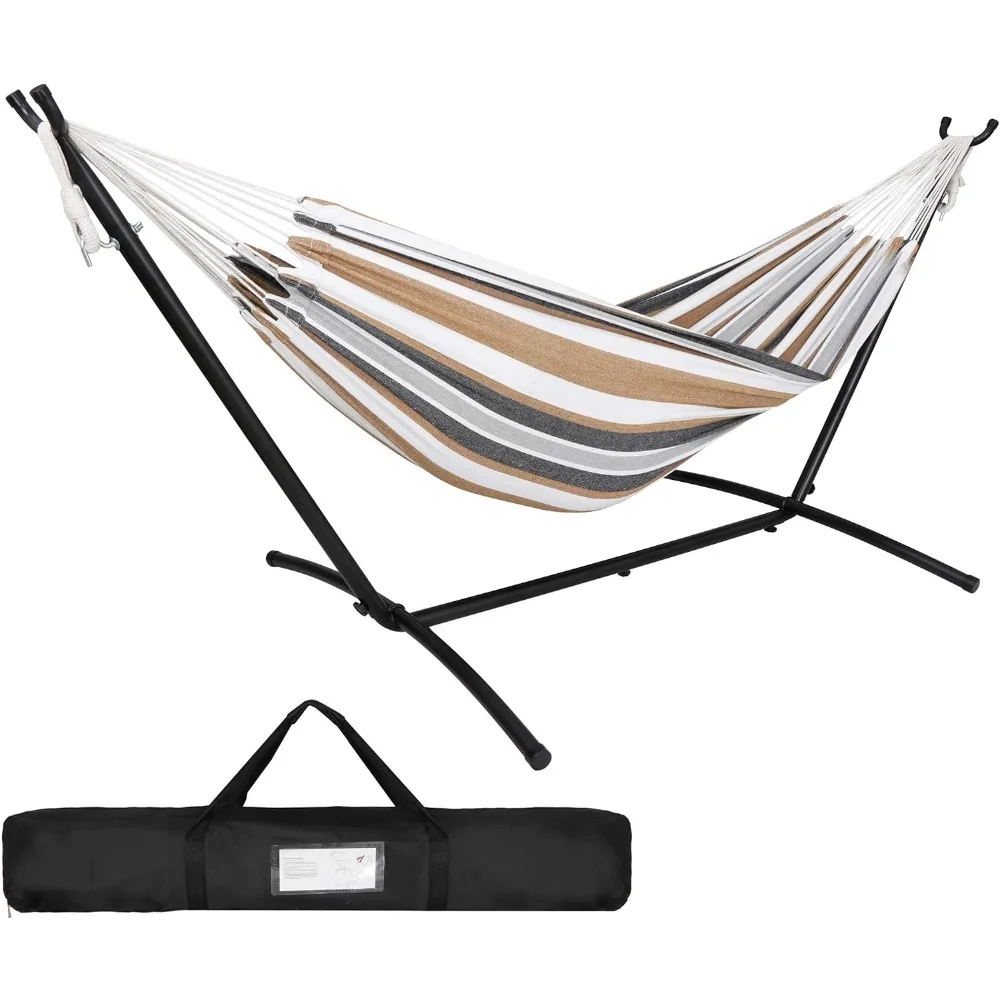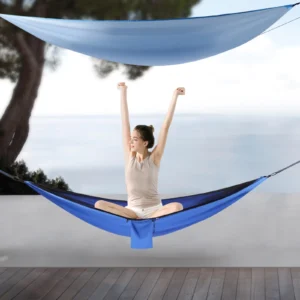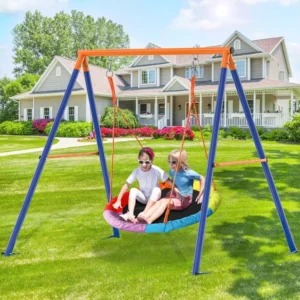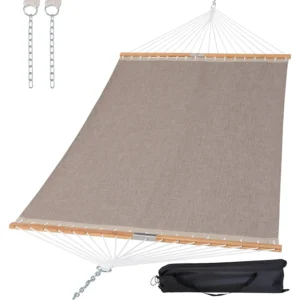The Unmistakable Advantages: Why Lightweight Hammocks Are Revolutionizing Outdoor Sleep
The outdoor sleeping experience is undergoing a remarkable transformation. While traditional tent camping has long been the standard for wilderness accommodation, more and more outdoor enthusiasts are trading their ground shelters for something far more liberating: lightweight hammocks.
This shift isn’t merely a passing trend. Long-distance hikers, weekend backpackers, and casual campers alike are discovering that hammock camping offers a fundamentally different—and often superior—outdoor sleeping experience. The appeal extends beyond novelty, as hammocks address many longstanding discomforts of ground sleeping while opening up new possibilities for campsite selection.
The growing popularity of hammock camping is reflected in the expanding market share these systems now command in outdoor gear shops. What was once considered a niche alternative has evolved into a mainstream option with specialized gear systems rivaling traditional tent setups in sophistication and performance.
Whether you’re a seasoned backpacker looking to shed pack weight or simply someone seeking more comfortable nights outdoors, the benefits of lightweight hammock camping warrant serious consideration. Proper indoor outdoor hammock placement techniques translate remarkably well to wilderness settings, creating opportunities for truly elevated rest. For those interested in complete systems, exploring quality camping hammocks with stands can provide versatility for both backyard and backcountry use.
In this guide, we’ll explore the comprehensive benefits that make lightweight hammocks an increasingly popular choice for discerning outdoor enthusiasts.
Supreme Comfort: Experience Sleep Like Never Before
Perhaps the most compelling reason to switch to hammock camping is the remarkable improvement in sleep quality. Unlike the unforgiving ground, hammocks naturally contour to your body’s shape, providing ergonomic support that eliminates pressure points.
The key to hammock comfort lies in the diagonal lay technique. By positioning yourself at roughly a 30-degree angle across the hammock, you create a flatter, more natural sleeping surface. This approach allows for:
- Natural spinal alignment without pressure points
- Support for both back and side sleeping positions
- Elimination of the “banana” curve that results from lying parallel to the hammock’s axis
- Adaptability to different body types and sleeping preferences
The gentle rocking motion of a hammock isn’t just pleasant—it’s scientifically linked to deeper sleep and improved sleep quality. Many hammock campers report falling asleep faster and staying asleep longer compared to their ground-sleeping experiences.
Perhaps most significantly, hammock camping eliminates the midnight discomfort of discovering you’ve placed your tent over a hidden root, rock, or subtle ground depression. Your sleep surface remains consistently comfortable regardless of what lies beneath.
Understanding proper hammock placement tips for home and garden provides valuable insights that transfer directly to wilderness camping, ensuring you’ll achieve optimal comfort in any setting.
Featherlight Packs: Drastically Reduce Your Carried Weight
For backpackers and hikers, every ounce matters. One of the most compelling advantages of lightweight hammock systems is their significant weight savings compared to traditional tent setups.
A complete lightweight hammock system typically weighs substantially less than an equivalent tent system, primarily because hammocks eliminate the need for heavy poles, numerous stakes, and ground pads. This weight reduction directly translates to increased energy conservation on the trail, less fatigue, and more enjoyable hiking experiences.
Consider this comparison between typical lightweight systems:
| Component | Hammock System | Lightweight Tent |
|---|---|---|
| Shelter | 10-16 oz hammock | 1-2 lb tent body |
| Support | 2-4 oz suspension straps | 8-14 oz poles |
| Weather protection | 7-12 oz tarp | Included with tent |
| Ground protection | Not needed | 4-8 oz footprint |
| Comfort layer | 14-18 oz underquilt | 14-20 oz sleeping pad |
| Total Weight | 33-50 oz | 48-74 oz |
Beyond pure weight savings, hammock systems also typically pack down smaller, occupying less volume in your backpack. This compact packability of lightweight hammocks allows for more efficient packing and better organization of other essential gear.
For those specifically seeking the lightest possible options, exploring ultralight camping hammock sets can reveal systems that push weight reduction even further without sacrificing comfort or functionality.
Effortless Setup & Takedown: More Time for Adventure
One of the most immediate benefits hammock campers notice is the remarkable simplicity and speed of setting up their shelter. While tent setup involves multiple steps—finding flat ground, clearing debris, assembling poles, staking corners, and attaching rainflies—a hammock system can often be deployed in a fraction of the time.
A basic hammock setup generally follows this straightforward process:
1. Locate two suitable trees at the appropriate distance
2. Wrap tree straps around each trunk at sitting height
3. Attach hammock ends to the straps
4. Hang and adjust tarp overhead if needed
Many experienced hammock campers can complete this entire process in under 5 minutes—significantly faster than the average tent setup. This efficiency becomes particularly valuable in challenging conditions like approaching darkness or precipitation, where rapid shelter deployment is crucial.
Modern quick-setup hammock sets feature innovations like daisy-chain suspension systems that eliminate complex knot tying and allow for quick adjustments with minimal effort. The simplified nature of hammock components also means fewer parts to potentially lose or break in the field.
Perhaps most valuably, the time saved during setup and takedown translates directly to more time enjoying your surroundings, relaxing at camp, or covering extra trail miles.

Unmatched Versatility: Camp in Places You Never Thought Possible
Hammock camping fundamentally transforms the concept of “suitable campsite.” While tent camping requires relatively flat, clear ground, hammock systems free you from this limitation, dramatically expanding your camping options.
Hammocks excel in challenging terrain such as:
- Sloped hillsides where flat tent spots are nonexistent
- Rocky areas without suitable tent-pitching surfaces
- Areas with extensive root systems or ground vegetation
- Locations with poor drainage where ground moisture is a concern
- Narrow ridgelines or tight spots between trees
This versatility can open up entirely new camping possibilities along your route, allowing you to stop when you’re ready rather than pushing on until finding suitable flat ground. It can even expand your hiking routes to include areas that would be impractical for tent camping.
The key is understanding basic hammock installation requirements and safety guidelines to ensure proper tree selection, appropriate hanging distances, and secure suspension. With these principles mastered, nearly any wooded area becomes a potential campsite.
Superior Ventilation & Temperature Control
Hammock systems offer remarkable adaptability to various climate conditions, with natural advantages for temperature regulation that enclosed tents can’t match.
In warm weather, hammocks provide superior ventilation through:
* 360-degree air circulation around your body
* Elevation above potentially humid ground air
* Absence of heat-trapping tent walls
* Natural body cooling from suspended position
This enhanced airflow significantly reduces condensation issues compared to enclosed tents, where moisture from breathing often collects on interior walls. Hammock campers rarely face the unpleasant experience of waking to dripping condensation.
In cooler conditions, hammock systems can be adapted with:
* Underquilts that insulate beneath without compressing (unlike sleeping pads)
* Topquilts that provide targeted warmth more efficiently than sleeping bags
* Adjustable tarp configurations to block wind or trap heat
* Optional “doors” or full enclosures for extreme conditions
The modular nature of hammock systems allows you to precisely adjust your setup to current conditions, adding or removing components as needed. For comprehensive protection in varying conditions, camping hammock sets with bug nets provide adaptable solutions that maintain ventilation while adding crucial protection.
Reduced Environmental Footprint: Camp with a Conscience
Hammock camping isn’t just beneficial for the user—it’s often gentler on the environment as well. By suspending your sleeping system above the ground, you eliminate the need to clear or flatten terrain, reducing your impact on delicate ecosystems.
Traditional tent camping requires:
* Clearing ground vegetation and debris
* Creating a flat sleeping surface, sometimes by digging or moving soil
* Compacting soil beneath the tent floor, which can damage root systems and slow regrowth
* Potentially damaging ground-level habitats for small organisms
In contrast, properly set up hammocks with appropriate tree-friendly straps (at least 1.5” wide) distribute weight evenly without damaging bark. They leave minimal trace once removed, supporting Leave No Trace principles more effectively than ground shelters.
This reduced impact makes hammock camping particularly valuable in heavily-used or ecologically sensitive areas. Understanding whether it’s okay to leave hammocks outside in various environments helps ensure responsible use that preserves natural spaces for future visitors.
Elevated Protection from the Elements & Critters
Being suspended above ground level provides natural protection from several common camping nuisances:
- Ground moisture and potential flooding during rain
- Crawling insects and many ground-dwelling creatures
- Pooling water that might seep through tent floors
- Surface debris and uneven terrain discomfort
A properly configured hammock with an appropriately sized tarp can provide excellent weather protection, often exceeding tent performance during heavy rain. Advanced tarp setups like hex cuts or winter configurations can be adjusted to match specific weather conditions, offering versatile protection.
Integration of bug nets—either built-in or add-on—provides comprehensive insect protection while maintaining ventilation and views. These systems create a protective cocoon that keeps flying and crawling insects at bay while preserving the comfort benefits of hammock sleeping.
Complete camping hammock systems typically include integrated bug protection and weatherproofing features, creating comprehensive shelter solutions for varying environmental conditions.
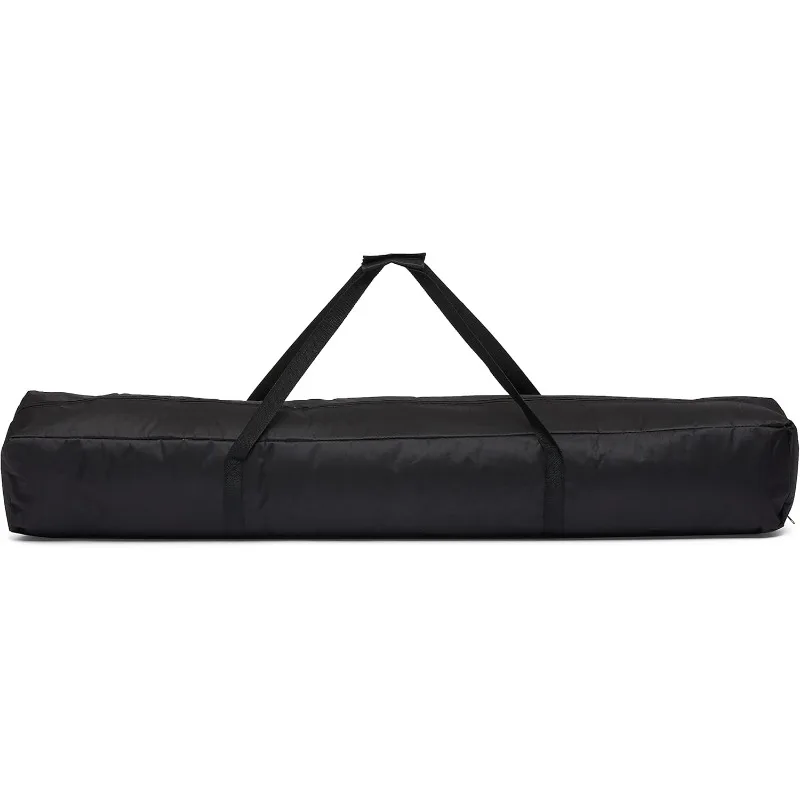
The Unique Hammock Experience: Deeper Relaxation and Connection with Nature
Beyond practical benefits, hammock camping offers a distinctly different experience that many find transformative. The gentle swaying motion has a meditative quality that can deepen relaxation and enhance the sensory experience of being outdoors.
The elevated perspective provides unique views often missed when tent camping. Looking up, you’ll enjoy unobstructed canopy views and stellar nighttime stargazing without craning your neck out of a tent door. The open design creates a sense of connection with surroundings rather than separation from them.
Hammocks also serve dual purposes that tents cannot match—they’re both sleeping shelters and comfortable daytime lounging spots. After a long hike, having a ready-made relaxation station at camp enhances the overall outdoor experience.
Many hammock enthusiasts report deeper, more restorative sleep combined with heightened awareness of their natural surroundings. The experience of creating a perfect hammock haven in the wilderness offers a unique blend of comfort and immersion that traditional camping often misses.
Lightweight Hammock vs. Tent: A Practical Comparison
When deciding between hammock and tent systems, consider this side-by-side comparison of key factors:
| Factor | Hammock System | Tent System |
|---|---|---|
| Comfort | Conforms to body, eliminates pressure points, no ground unevenness | Requires suitable padding, dependent on ground conditions |
| Weight | Typically 2-3 lbs for complete ultralight system | Typically 3-4+ lbs for comparable quality lightweight tent |
| Setup Ease | 3-5 minutes average setup, fewer components | 5-10 minutes average setup, more complex assembly |
| Terrain Flexibility | Requires only trees/anchors, works on slopes and rough ground | Requires flat, clear terrain free of roots/rocks |
| Weather Protection | Excellent with proper tarp setup, superior drainage | Good all-around protection, vulnerable to flooding |
| Environmental Impact | Minimal ground disturbance, tree-friendly with proper straps | Requires clearing area, compacts soil and vegetation |
| Temperature Range | Requires specific adaptations for cold weather | Generally better insulated for cold without additions |
| Cost | $150-400 for complete quality system | $200-500 for comparable quality lightweight tent |
Neither system is universally superior—each excels in different conditions. The optimal choice depends on your specific needs, camping style, and typical environments. Many experienced outdoor enthusiasts eventually own both, selecting the appropriate system for each trip.
Understanding the differences between indoor vs outdoor hammocks can help inform your camping hammock selection, as many features desired for camping apply to both categories.
Mastering Hammock Camping: Addressing Common Questions
While the benefits of hammock camping are substantial, newcomers often have concerns about potential drawbacks or limitations. Most of these challenges have straightforward solutions that become second nature with experience.
The initial learning curve for hammock camping is relatively short, particularly with modern equipment designed specifically for this purpose. Most newcomers achieve comfortable, secure setups within their first few outings, with proficiency developing quickly thereafter.
Lightweight hammock sets typically include the core components needed to begin, though additional accessories may enhance comfort in specific conditions.
Camping Hammock Sets with Bug Net, Ultralight Camping Hammock Sets
$139.72 Select options This product has multiple variants. The options may be chosen on the product pageFolding Hammock Sets, Quick Setup Hammock Sets
Price range: $305.52 through $583.27 Select options This product has multiple variants. The options may be chosen on the product pageCamping Hammock Sets with Bug Net, Complete Camping Hammock Systems
Price range: $82.73 through $97.96 Select options This product has multiple variants. The options may be chosen on the product pageFolding Hammock Sets, Lightweight Hammock Sets
$295.80 Select options This product has multiple variants. The options may be chosen on the product pageComplete Camping Hammock Systems, Hanging Egg Chair Sets
$266.73 Select options This product has multiple variants. The options may be chosen on the product page
Staying Warm When Temperatures Drop
Temperature management represents the primary challenge for new hammock campers. Unlike ground sleepers, hammock users experience airflow around their entire body, which can lead to “cold butt syndrome” without proper insulation.
Effective cold-weather hammock strategies include:
- Using underquilts that hang beneath the hammock without compression
- Selecting topquilts designed specifically for hammock geometries
- Configuring tarps in “winter mode” with closer sides and end covers
- Choosing protected hang sites away from wind exposure
- Wearing appropriate insulated clothing layers
- Using sleeping pad systems when underquilts aren’t available
With proper insulation, hammock systems can be comfortably used in temperatures well below freezing—many enthusiasts regularly camp in winter conditions with appropriate gear.
Keeping Bugs at Bay
Insect protection in hammocks is straightforward with several effective options:
- Integrated bug nets that create a complete protective enclosure
- Add-on bug nets that can be deployed when needed
- Permethrin treatment for hammock fabrics and suspension systems
- Strategic site selection away from high-insect areas
Modern hammock bug protection systems are typically lighter and better ventilated than tent equivalents, maintaining airflow while creating effective barriers against flying and crawling insects.
Finding Suitable Anchor Points (And What To Do If You Can’t)
While hammock camping ideally requires trees, creative solutions exist for environments where suitable anchors are limited:
- Portable hammock stands designed for backpacking (typically 2-4 lbs)
- Rock climbing protection devices for securing to large boulders
- Vehicle attachment systems for front-country camping
- Structural elements like fence posts or sturdy building features when appropriate
When selecting natural anchors, look for healthy trees at least 6-8 inches in diameter, with 12-15 feet of separation for most hammock lengths. Always use tree-friendly straps at least 1.5 inches wide to distribute pressure and prevent bark damage.
Ensuring Privacy
Privacy concerns in hammocks can be addressed through:
- Strategic tarp configuration with extended coverage on exposed sides
- Careful site selection using natural vegetation screens
- Hanging at appropriate heights to stay above eye level
- Specialized privacy panels that attach to suspension points
While hammocks are inherently more open than tents, these approaches can create private spaces comparable to tent camping when desired.
Is a Lightweight Hammock Your Ideal Camping Shelter?
Determining whether hammock camping is right for you depends on several personal factors:
Your preferred sleeping position and comfort needs are primary considerations—side and back sleepers typically adapt quickly to hammock sleeping, while dedicated stomach sleepers may need more adjustment time.
Your typical camping environments matter significantly. If you frequently camp in densely wooded areas with ample tree options, hammocks offer maximum advantage. Conversely, regular trips to alpine or desert environments may present challenges without adaptation strategies.
Consider starting with hybrid approaches, perhaps carrying both lightweight options initially or testing hammock camping in forgiving conditions before committing to challenging environments.
Lightweight Hammocks Shine For:
- Backpackers seeking significant weight and volume savings in their packs
- Those who struggle with comfortable ground sleeping due to back issues or pressure points
- Hikers traversing varied terrain with limited flat camping options
- Hot-weather campers who prioritize ventilation and airflow
- Environmentally conscious campers concerned about ground impact
- Those who appreciate multi-purpose gear that serves as both sleep system and relaxation spot
The versatility and comfort benefits are particularly valuable for solo travelers or those covering significant distances where every ounce matters.
Consider Alternatives or Adaptations If:
- You’ll be camping primarily in treeless environments without bringing a portable stand
- Your trips involve extreme cold without specific winter hammock gear
- You need to share sleeping space with a partner (though double hammocks exist)
- You require extensive protected space for gear storage beyond what a tarp provides
- You’re a committed stomach sleeper unwilling to adapt to new positions
Many of these limitations can be addressed with specialized gear or technique adaptations, but they may require additional investment or learning.
Building Your Lightweight Hammock System: Essential Gear
A complete lightweight hammock camping system typically includes:
Hammock: The core component, typically made from nylon or polyester, weighing 10-16 ounces. Features may include integrated bug nets, ridge lines for consistent sag, and multiple attachment points.
Suspension System: Tree straps and attachment hardware that safely connect your hammock to anchor points. Look for adjustable systems with adequate width to protect trees.
Weather Protection: Tarps or rainflies designed specifically for hammock coverage, available in various shapes and sizes to match conditions.
Insulation: Underquilts that hang beneath the hammock without compression, and topquilts designed to wrap effectively around hammock contours.
Bug Protection: Either integrated or add-on mesh systems that create insect barriers while maintaining visibility and ventilation.
Accessories: Including ridgeline organizers, gear slings for storage, drip lines to prevent water tracking, and structural additions like spreader bars.
Quality lightweight systems optimize the balance between durability and weight, with premium materials often providing better strength-to-weight ratios for long-term value.
Lightweight Hammock Camping: Your Next Steps
The benefits of lightweight hammock camping extend far beyond simple weight savings. From superior comfort and versatility to environmental mindfulness and unique nature connections, these systems represent a fundamentally different approach to outdoor accommodation.
For those intrigued by the possibilities, starting small is advisable—perhaps begin with backyard overnight experiences or single-night trips in favorable conditions before committing to extended backcountry adventures.
Many hammock enthusiasts find that the transition period is brief, with comfort and setup efficiency improving rapidly with practice. The skills developed transfer seamlessly between frontcountry and backcountry environments, creating versatility that traditional tent systems can’t match.
As Outside Luxe’s collection demonstrates, modern hammock systems have evolved significantly from simple rope hammocks, with specialized designs addressing the specific needs of overnight campers seeking lightweight, comfortable solutions.
Whether you’re looking to reduce pack weight, find relief from uncomfortable ground sleeping, or simply experience nature from a fresh perspective, lightweight hammock camping offers compelling benefits worth exploring on your next outdoor adventure.

